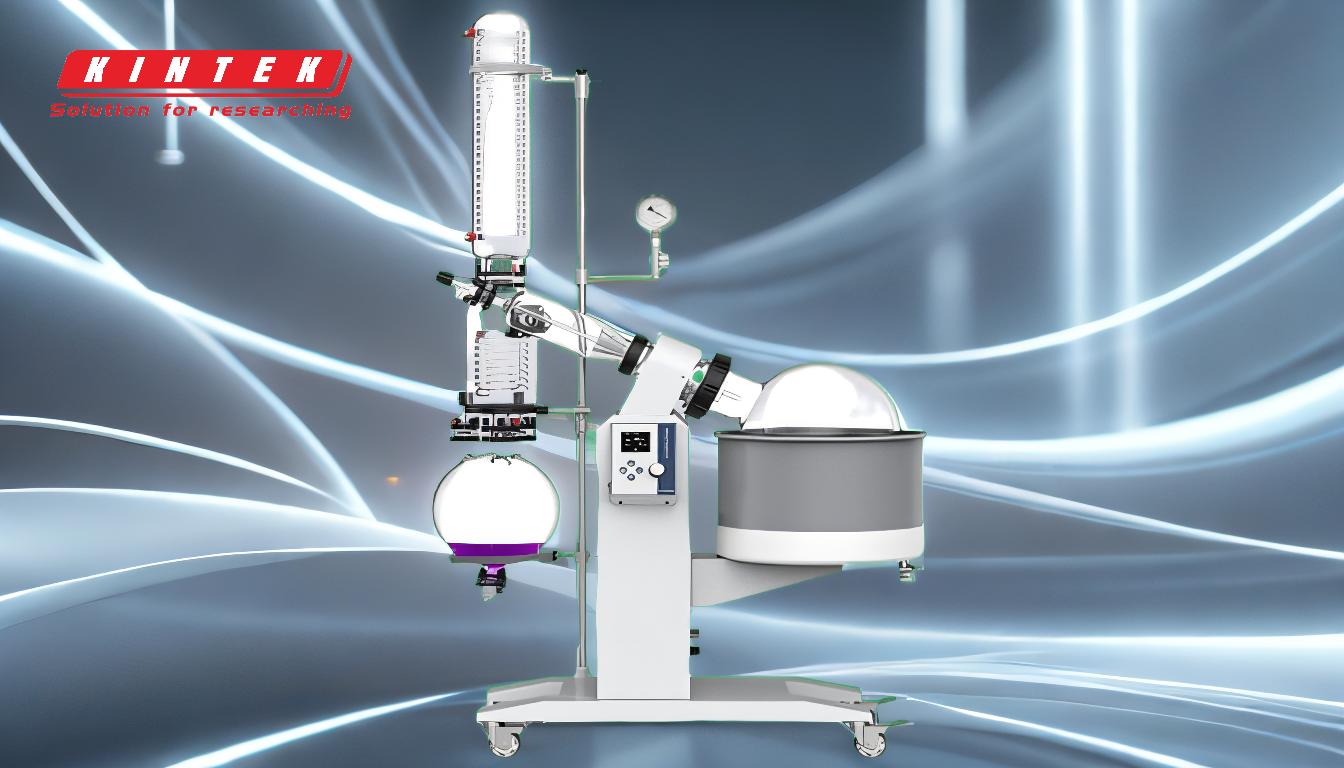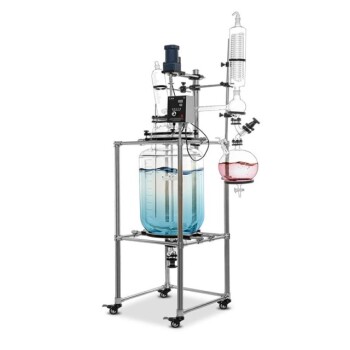The rotary evaporator, commonly known as a rotavap or rotovap, is a versatile and essential piece of laboratory equipment designed for the efficient removal of solvents from samples through evaporation. Its primary purpose is to concentrate samples by evaporating volatile solvents under controlled conditions, making it particularly useful in processes like isolation of desired compounds after chromatography or extractions. The rotary evaporator operates by heating a solution in a rotating flask, which increases the surface area for evaporation, while a vacuum system reduces the pressure to lower the boiling point of the solvent. The evaporated solvent is then condensed and collected, leaving behind a concentrated sample. This equipment is widely used in organic chemistry, pharmaceuticals, and other industries for tasks such as solvent recovery, crystallization, and drying.
Key Points Explained:

-
Purpose of Solvent Removal:
- The primary function of a rotary evaporator is to remove solvents from a sample. This is crucial in processes where the solvent needs to be separated from the desired compound, such as after chemical reactions or extractions.
- It is particularly effective for removing low-boiling solvents, which evaporate more readily under reduced pressure and controlled heating.
-
Efficiency in Evaporation:
- The rotary evaporator increases the rate of evaporation by combining several factors:
- Rotation of the Flask: The rotating flask increases the surface area of the sample, allowing for faster evaporation.
- Vacuum System: By reducing the pressure inside the system, the boiling point of the solvent is lowered, enabling evaporation at lower temperatures.
- Controlled Heating: A water or oil bath heats the sample gently, preventing thermal degradation of sensitive compounds.
- The rotary evaporator increases the rate of evaporation by combining several factors:
-
Versatility in Applications:
- Rotary evaporators are used in a wide range of industries, including pharmaceuticals, chemistry, biology, and food production.
- Common applications include:
- Concentration: Reducing the volume of a solution to isolate a compound.
- Solvent Recovery: Collecting and reusing solvents, which is both cost-effective and environmentally friendly.
- Crystallization: Facilitating the formation of crystals by removing excess solvent.
- Drying: Removing residual solvents from samples to obtain a dry product.
-
Controlled Conditions for Sensitive Samples:
- The rotary evaporator allows for precise control over evaporation conditions, such as temperature, pressure, and rotation speed. This is particularly important for heat-sensitive compounds that may degrade at high temperatures.
- The use of a chilled condenser ensures that the evaporated solvent is efficiently recondensed and collected, minimizing loss.
-
Use in Laboratory Workflows:
- In organic chemistry labs, rotary evaporators are often used after processes like column chromatography or separatory-funnel extractions to isolate and concentrate desired compounds.
- They are also used in pilot-scale experiments and small-scale production, where precise control over solvent removal is necessary.
-
Advantages Over Traditional Evaporation Methods:
- Compared to open-air evaporation or simple distillation, rotary evaporators offer several advantages:
- Faster Evaporation: The combination of rotation, vacuum, and heating significantly speeds up the process.
- Gentler on Samples: Lower temperatures and controlled conditions reduce the risk of degrading sensitive compounds.
- Automation: Many modern rotary evaporators come with automated controls, making the process more efficient and reproducible.
- Compared to open-air evaporation or simple distillation, rotary evaporators offer several advantages:
-
Components and Operation:
-
A typical rotary evaporator consists of:
- Rotating Flask: Holds the sample and rotates to increase the surface area for evaporation.
- Heating Bath: Provides controlled heating to the sample.
- Vacuum System: Reduces pressure to lower the boiling point of the solvent.
- Condenser: Cools the evaporated solvent, causing it to recondense into a liquid for collection.
- Collection Flask: Collects the condensed solvent.
-
The operation involves setting the desired parameters (temperature, pressure, rotation speed) and allowing the system to run until the solvent is fully removed.
-
In summary, the rotary evaporator is a critical tool in laboratories and industries for the efficient and controlled removal of solvents from samples. Its ability to operate under reduced pressure and controlled heating makes it ideal for handling heat-sensitive compounds, while its versatility allows it to be used in a wide range of applications, from solvent recovery to crystallization and drying.
Summary Table:
| Key Feature | Description |
|---|---|
| Purpose | Removes solvents from samples for concentration, crystallization, and drying. |
| Efficiency | Combines rotation, vacuum, and heating for faster, controlled evaporation. |
| Applications | Used in pharmaceuticals, chemistry, biology, and food production. |
| Advantages | Faster evaporation, gentle on samples, and automation for reproducibility. |
| Components | Rotating flask, heating bath, vacuum system, condenser, and collection flask. |
Discover how a rotary evaporator can optimize your lab processes—contact us today!













